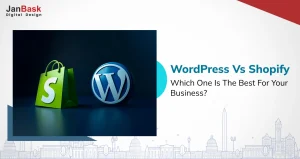
“I will leave branding for later, once my company is profitable.”
In a rush to market and sell, many small business owners overlook the fact that their firm is both a corporation and a brand.
It's possible that your brand value will get over without the use of branding, but this could lead to unintended consequences and long-term concerns. However, this method will have a negative impact on your business in a number of ways: you'll get more queries than purchases, audiences won't know what you're all about, and potential consumers will buy from your competitors.
So if you are thinking that branding is just for the big companies, let us correct you here. It can be a valuable tool for small businesses as well! But the truth is, no matter how big or little your company is, you need to think about branding your firm if you're in business at all.
Branding is more expensive for larger organizations because they have higher budgets. However, you don't need a huge chunk of money to design an effective branding strategy from the bottom up. With a little creativity, you can make your business memorable and stand out from the crowd without breaking the bank.
Creating and cultivating emotional connections with your customers is essential for small businesses to compete in today's market. Branding may have a significant and immediate impact on your company's bottom line if done correctly.
We'll take you step-by-step through the process of developing unique branding strategies for small business. How to employ a small business branding expert, what brand listening tools to utilize, and more are all covered in this guide to branding for a small business. .
Your brand's identity is more than simply a single logo. Style guidelines, marketing materials, and color palettes are just the tip of the iceberg. Instead, brand identity is the sum of your brand's visual, emotional, and verbal attributes. As a result, it has a direct impact on your customers' perceptions of your business and credibility.
With so much on the line, it's unlikely that the unique brand identity of your small business will emerge in an instant. It takes a lot of time, effort, and thought, but the payoff is well worth it.
In order to complete the process, there are several steps:
The first step is to conduct a thorough investigation.
Even if you don't, it's fine if you don't yet know who you are as a company. First, however, a little corporate soul-searching is in order.
You should ask yourself these questions while you're developing your brand identity.
Having a clearer idea of who you are and what you stand for can help you create a distinct and memorable brand that attracts the attention of potential clients.
If you don't know your target audience, it's impossible to build a successful brand identity. So, before anything else, spend some time getting to know your primary, secondary, and tertiary audiences. Set up personas for each of your customers that describe their interests, hobbies, and values.
Proceed to competition research if you have a firm grasp of your target audience's needs. For example, what are the aesthetic aspects, personalities, and themes of other companies in your industry?
As a final point, don't forget to interview your present staff members as well. They have a vital voice to consider in terms of how the company should be portrayed and what has worked or not in the past.
It's time to have some fun now that the hard part is over. It’s time to transform all your learnings into images. As an example, consider the following popular brand assets:
The 3 Cs of branding might be helpful while you're establishing your brand assets:
A compelling brand narrative will help to solidify your company's image. This isn't strictly the story of how and why you got started in business, but it will include some of that information. In order to address these questions, your brand story should:

You need to remember that your brand story isn't just the elevator speech you use to describe your company to strangers. Instead, it's all about how and why your company's brand connects with customers.
It's perfectly fine if the identity of your company evolves over time. First, however, your initial brand identity should be analyzed and refined in light of feedback from customers. Then, find out what works and what doesn't by experimenting with fresh ideas and techniques. Using A/B testing, for example, you may observe which phrase resonates with your audience the most.
It's time to start designing your brand now that you know who you are, who your customers are, what makes you unique, and what's succeeding in your industry. As with larger corporations, this is an essential element in building your small business's brand.
In order to develop your brand's appearance and feel, you'll need the following items:

When it comes to your small business branding, consistency is key. Otherwise, you run the risk of confusing your clients and losing them to the competition.
With the correct material, you can establish yourself as a subject matter expert in a particular product or any industry. Fortunately, you don't have to spend a fortune on advertising to get your message out there. Instead, content marketing is a more efficient, less time-consuming, and more cost-effective method of promoting your brand.
There are a plethora of benefits to utilizing content marketing.
Creating the correct content is the most important part of a successful content marketing campaign. Identify the questions your clients ask and then develop content that answers those questions. It's important to remember that your customers are eager to learn as much as possible about your sector. If you can provide value to your clients and answer their queries, you'll gain their trust and, ultimately, more business.
The more trustworthy a brand is, the more likely people are to conduct business with it. Unfortunately, it can take a long time to build trust if you're a new company. So be on the lookout for partnerships with businesses that your customers currently use.
Customers are more inclined to trust a brand they already know and trust if they're introduced to it by another brand they know and trust, and as a result, they'll give you their business.
In today's hyper-competitive market, talking isn't enough. What you do after you've established a relationship with a consumer has a lot more to do with your brand's identity than just your logo and marketing tactics. The most significant component of your brand is the reputation you build and the things customers say about you behind your back.
This means that in order to be successful over time, you need to be a superhero for your customers.
If your customers have a pleasant experience every time they connect with your brand, they’re going to keep coming back, and they’re going to tell their friends, too. So look for ways to make the customer experience better in your company.
Is it confusing to place a purchase on your website?
Rework the layout to make it easier for your users to understand.
Is it a hassle to make a return?
Send customers a prepaid return label and clear instructions to make the transaction easier.
The better you can make your customer experience, the more you’ll be renowned as a company that cares about its consumers and the more customers you’ll acquire as a result.
Today, a brand can be easily established by creating a community of followers and customers. You can use social media to increase sales by creating an online community and generating a large audience on your site by using a social sharing tool. Many brands are unaware of the benefits of social media to the user experience. It helps boost brand loyalty and build trust among the current fans of your brand. Small business branding services help you create a defined strategy for your business if you are new to this.
Branding should not be underestimated, even by small firms. Your brand influences everything that people see about you and how much they care and appreciate you for them. Branding helps build trust, reputation, and trust.
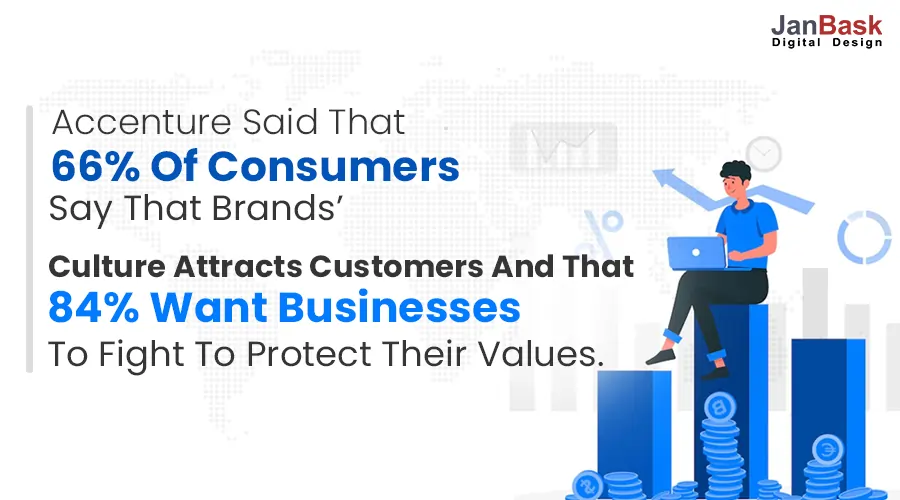
It shows how a branding campaign can be effective. Your brand tells the truth about your brand.
Looking to Grow Your Brand Online?

Brand myths are typical in the early stages of creating your brand identity. Sadly, too many business owners fall prey to these myths, which in the long run, can have a negative impact on their firm.
Remember that your company's greatest value is not to be overlooked. A company's value can be attributed to its brand to the tune of 30% to practically 50%. As a result, your product or service becomes something unique and unreplicated: the value you provide to your target audience.
You don't have to spend a lot of money on branding. It's an investment in tangible property. Even if no one agrees on exactly how much it's worth, it could still be your most valuable asset.
It's surprising that some individuals think branding makes things more difficult when, in actuality, not investing in branding makes things more difficult. You don't have to spend a lot of money on your brand strategy, even if you think your business is basic. Instead, make a list of all the things that make your narrative unique. Do everything you can to ensure that it is simple to understand, well-organized, and reusable.
A Spanish superfood firm, Glorioso Super Nutrients, created seed packet-inspired supplement containers with an abstract circle shape to indicate the contents.
A branding agency in Barcelona created Glorioso's whole brand design, including the company's vibrant business cards.

Image Credit: Hubspot
It's hardly the first thing that springs to mind when you think of an auto body business. However, when you look at Robinson's Accident Repair Center's logo, you'll see that it's sleek and retro-inspired, with minimum branded materials and an interior design to match.
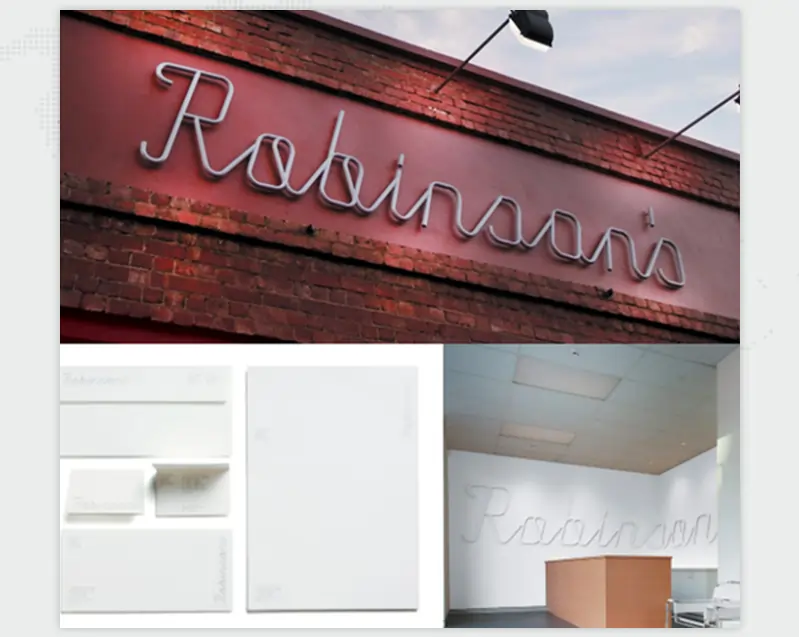
Image Credit: Hubspot
Doctor Manzana is a smartphone and tablet repair store in Valencia, Spain, run by a doctor. A new brand identity was created for the company in order to attract a new audience for its services and products. The brand was intended to attract diverse clients, from fashionistas to geeks, translated here into several kinds of colors through a brand picture that continually plays with the angle of 54 degrees formed by a mobile phone's screen.
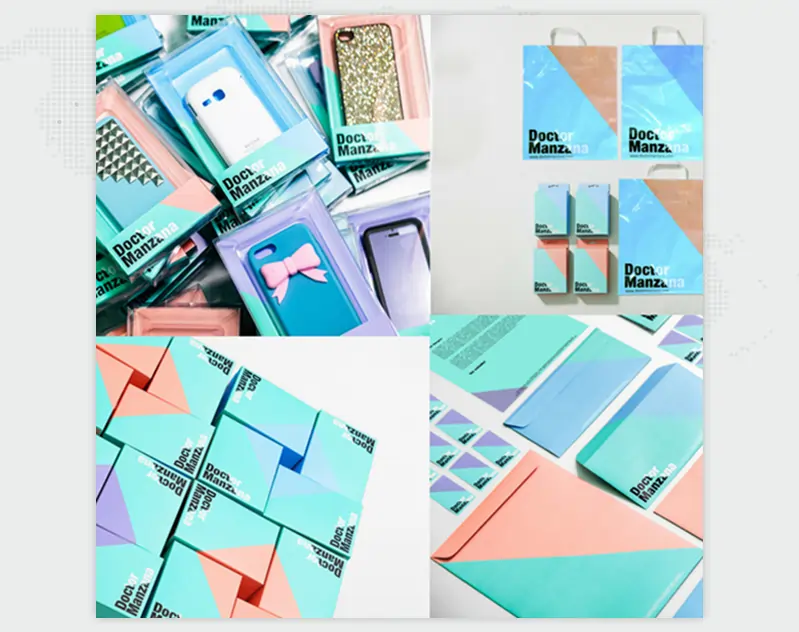
Image Credit: Hubspot
When it comes to making their specialty dessert, Lune is a future-forward bakery with a significant focus on science and technology. Then, it makes it natural that their logo, designed by a Melbourne-based agency, features a croissant-tailed spaceship.
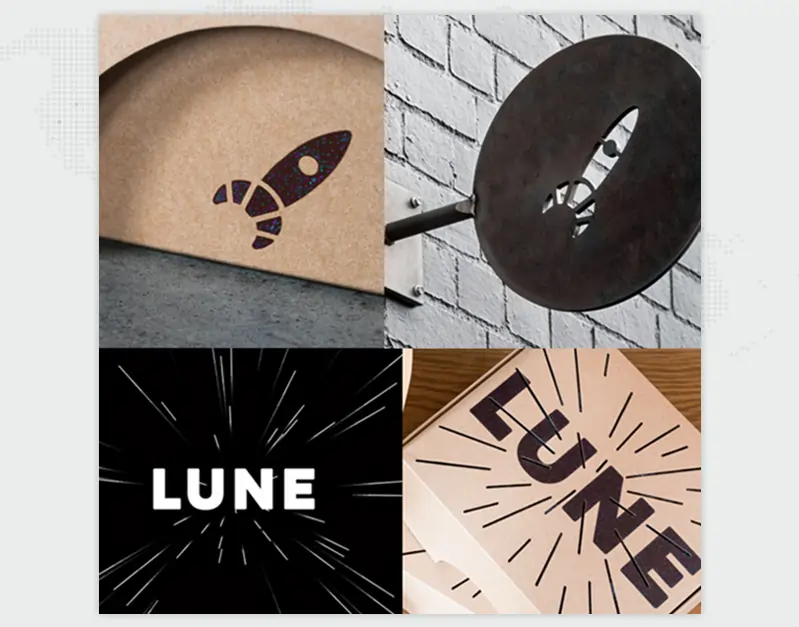
Image Credit: Hubspot
There are many other small business branding examples that have grown from the ground. You can read more about them here.
All brands speak their own language. Nevertheless, your target audience must associate a good sense of emotional response with your product or service. This will vary depending on your brand vision, industry, or target audience. Your company voice could include service-oriented, professional promotions, friendly, technical conversation, informative and authoritative.
If you are confused about how to do branding for small businesses, start by analyzing competitors' websites. Take a quick survey on the websites of each competitor to determine what it feels like. How do you think people are feeling? The answers to these questions can guide you in your analysis.
Whatever your competitors dish out, it's important that they serve and delight their target customers. As you concentrate on developing a strong community profile, you'll get ways to meet more customers. Keep in mind their feedback is very important. Their comments are an invaluable tool for reviewing your branding strategy. It feeds into your new marketing strategy because your business and its offerings must evolve to match their demands.
And lastly, no brand can shine without an engaging brand tale. Your voice can lead to the right story. You must create your story as an independent effort. Tell the story of a business that is yours. And soon you will see the most amazing results.
We hope these small business branding ideas will guide you properly. Happy Branding!
Looking to Grow Your Brand Online?

A
Great insights on how to brand. I have taken great inspiration from it, and I shall definitely use them when I start my business.
J
Wow, thanks for clearing the myths. I was under the same notion, and this article has helped me get over my fears.
O
Enjoyed reading it!
K
Great insights on branding.
P
Nice examples. I could instantly relate to them.